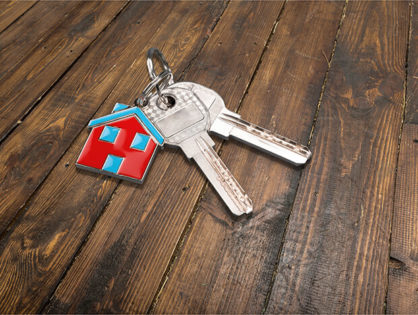Before putting your home on the market or setting a price, take the time to do some research and make some preparations to ensure that you get the best possible price for your property. The first step to successful selling is always to know your target customer. Where is your house located and who lives in your community? What types of similar houses are selling and who is buying? Kinds of houses are pulling the highest prices and that is buying them? Once you’ve narrowed the customer pool and decided on some sort of target demographic, monitor the housing market for a time to better understand pricing.
To estimate a cost, you first have to know the marketplace. You need to know selling prices for several other homes in your community, as well as for homes just like the one you’re trying to advertise. Average them to get your own beginning estimate. It also helps to be willing to invest some dough to make your property more pleasing to buyers. Even if you are not able to make significant structural renovations, there are simple techniques you may use to move your property quickly off of the market and raise your cost.
Take Care of all House Renovations
While you do not have to renovate to sell a house, updating key rooms such as the kitchen is usually a great investment.
Lighting is Important
Keep your decor light, and airy in addition to neutral. Create a space audience can imagine as their individual while keeping it comfortable in addition to warm. Utilize natural light in addition to removing all clutter.
Remodel Your House to be Family Friendly
If you’re currently living in the place you’re selling, make sure you remove most family pictures and personal objects. You should also thoroughly clean the house and consider removing excess pieces of furniture. If the property is clear, you should seriously consider hiring an inside design company. Some designers perhaps include rental furniture and staging.
Good Photography is the Key to Advertising
To generate interest in your house for sale and draw an audience, you or your realtor will need to list it in various places. For these listings, you need well-done professional photographs on the inside and outside of your property. Numerous, quality photos and exact contact information are vital for you to succeed.
Once you have your house for sale listed it’s time for you to move on to show in addition to negotiating. If you did a good job listing, you should start receiving calls from buyers wanting to create a viewing. You can also advertise in addition to hosting open houses to get buyers in your residence. Hopefully, more than one of these potential buyers will make an individual an offer. Rarely do buyers and dealers see eye to eye for the initial offer, so be happy to negotiate. Your degree of power during a negotiation depends on the condition of the market and also the degree of your need to market.
The services of an accredited real estate professional can be quite helpful in the selling process. Getting rid of your home can be hard, and time-consuming do the job. If you have a house for sale and are not able to prepare it for the market and list it all on your own, consider hiring a design company and reputable agent to aid move the place for an individual. Good luck.
Real Estate Photography Tips for Beginners
Real estate photography is an important part of the process of selling or leasing a property, as it can help potential buyers or renters visualize what the property looks like and understand its layout and features. Here are a few tips for beginners in real estate photography:
- Use a high-quality camera: Invest in a camera with a good lens and high resolution to ensure that your photos are clear and crisp. A DSLR or mirrorless camera is a good choice for real estate photography.
- Use a wide-angle lens: A wide-angle lens can help capture the entire room or space in a single shot, which can be especially useful for smaller properties.
- Use natural light: Natural light can help make photos look more vibrant and lifelike. Try to take photos during the day when there is plenty of natural light, or use a flash to fill in any dark areas.
- Pay attention to composition: Composition refers to the way elements in a photo are arranged. Use the rule of thirds to divide your photo into three equal parts horizontally and vertically, and position your subject along these lines.
- Edit your photos: Use photo editing software to adjust the color, brightness, and contrast of your photos to make them look their best.
- Take a variety of photos: In addition to standard interior and exterior shots, consider taking photos of specific features or details, such as a fireplace or a backyard. This can help potential buyers or renters get a better sense of the property.
- Hire a professional: If you are not comfortable taking your own photos, consider hiring a professional real estate photographer. A professional will have the skills and equipment to take high-quality photos that showcase the property in the best possible light.
How to Use Photography for Advertising Your Real Estate?
Here are some tips for effective real estate advertising and photography:
- Use high-quality, professional photographs: Real estate listings with professional photographs tend to attract more attention and generate more leads. Make sure to use a high-resolution camera and take a variety of shots that showcase the property’s best features.
- Include details in the photos: In addition to wide, exterior shots of the property, be sure to include close-up shots of any unique features, such as a fireplace or a renovated kitchen.
- Use aerial photography or video: Aerial photography or video can give potential buyers a sense of the property’s location and surroundings.
- Utilize virtual tours: Virtual tours allow buyers to virtually “walk through” a property and get a feel for the layout and features. This can be especially useful for buyers who are unable to visit the property in person.
- Write a compelling description: In addition to the photographs, be sure to include a detailed and well-written description of the property. This should include information about the size, location, and features of the property, as well as any relevant details about the surrounding neighborhood.
- Utilize social media: Social media platforms such as Facebook and Instagram can be a great way to promote your real estate listings. Be sure to use high-quality photographs and include relevant hashtags to make it easier for potential buyers to find your listings.
- Utilize online real estate platforms: Online real estate platforms such as Zillow and Redfin can be a great way to reach a wider audience of potential buyers. Make sure to include as much information as possible and use high-quality photographs to make your listings stand out.





